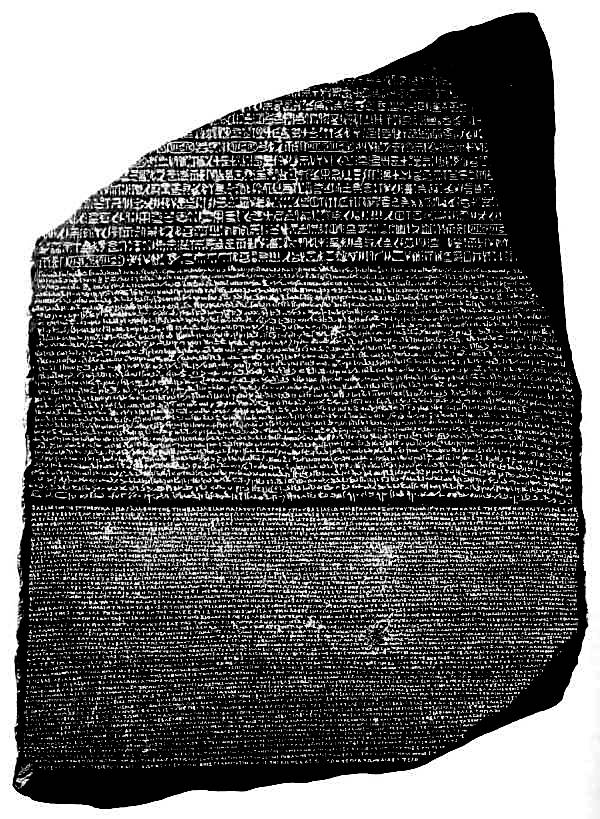
© The Trustees of the British Museum
The Rosetta Stone is a slab of black basalt dating from 196 BC. Its inscription (a royal decree praising Egypt's king Ptolemy V) was written on the stone three times: once in hieroglyphic, once in demotic, and once in Greek. Napoleon's troops discovered it in 1799 near the seaside town of Rosetta in lower Egypt. Jean Francois Champollion, a French Egyptologist, was able to compare the three languages and decifer Egyptian hieroglyphics, thus unlocking a window into the past. Since then, most everything that remains of the Egyptians' ancient writings have been translated by new generations of Egyptologists. The stone now resides in the British Museum, in London.
Back to Kac Web